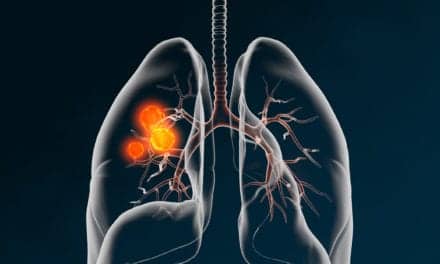According to a recent report issued at the IASLC 2021 World Conference on lung cancer, less than half of community oncologists surveyed indicated they use biomarker testing to guide patient discussions — compared to 73% of academic clinicians.
Recent advances in cancer genomics and targeted therapies have changed the management of lung cancer, but like many new medical technologies, there is a concern these new methods, which include biomarker testing, will not be used equally throughout the health care system and worsen disparities that may already be entrenched.
To find out, Rockville, Md.-based Association of Community Cancer Centers (ACCC), led by Leigh Boehmer, PharmD, chief medical officer, developed a U.S. oncology clinician-facing survey instrument. ACCC partnered with LUNGevity for the patient-facing components of this project.
This study used a mixed-methods approach to understand practice patterns, attitudes and current educational needs related to biomarker testing to determine ongoing goals for related education and implementation needs. Objectives of the survey included assessment of current practice patterns, attitudes, barriers experienced, and resource needs related to the ordering of biomarker testing.
To be included, clinicians had to care for patients with NSCLC who were uninsured or covered by Medicaid (including dual-eligible beneficiaries).
The researchers developed a survey instrument based on data analysis, open-ended response coding, and sub analyses between demographic cohorts (with an emphasis on community versus academic clinicians) to capture differences in decision-making and attitudes expressed. To provide context to these data, two virtual focus groups were also conducted.
To help guide clinicians in the use of biomarker testing, the College of American Pathologists, the IASLC, and the Association for Molecular Pathology published the 2018 CAP/IASLC/AMP Molecular Testing Guidelines for Lung Cancer. Boehmer reported of the 99 responses collected, only 40 percent indicated they were “very” or “extremely familiar” with the 2018 guidelines.
Community oncologists were most confident in selecting appropriate tests to use, interpreting test results, and prognosticating based on test results, but less confident in determining when to order testing and coordinating care across the multidisciplinary team. This lack of communication was echoed in the focus groups, Boehmer reported.
He stated clinicians are most likely to order biomarker testing to make more accurate treatment decisions and inform patient discussions, but only 48% of community clinicians indicated they use biomarker testing to guide patient discussions compared to 73% of academic clinicians (P =.021).
When asked about their preferences when making a final testing decision, 41% of community oncologists prefer sharing responsibility with the patient, while 52% have a more prescriptive approach, preferring to make the final decision themselves. Only 6% prefer the patient make the final decision about testing. Focus groups suggest clinicians perceive patients rarely understand what testing entails and what it means for their treatment options.
To make more informed decisions about biomarker testing, clinicians indicated they need more information on financial resources, as well as education around both published guidelines and practical implications of clinical data. Sixty-seven percent of community oncologists provide printed educational materials to their patients. When asked what resources their patients need most, 27% said their patients need handouts or educational resources, followed by psychosocial support (23%) and financial assistance (22%).
“This study identifies key areas of ongoing clinician need related to biomarker testing, including increased guideline familiarity, practical applications of guideline-concordant testing, and how to optimally help coordinate multidisciplinary care,” Boehmer says. “Professional organizations and advocacy groups should focus on developing impactful education materials and tools for improving patient-clinician discussions about biomarker testing.”





